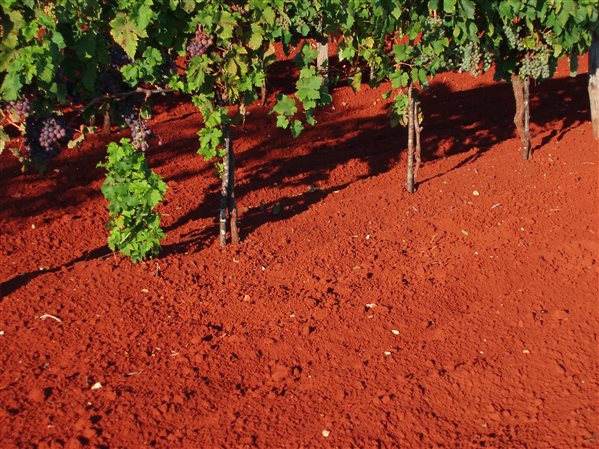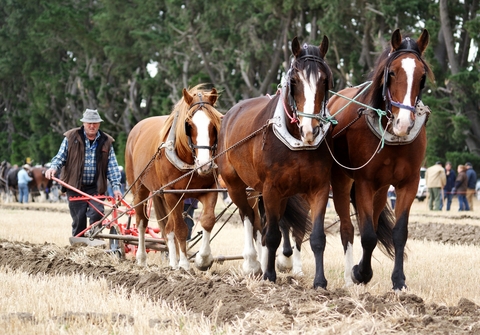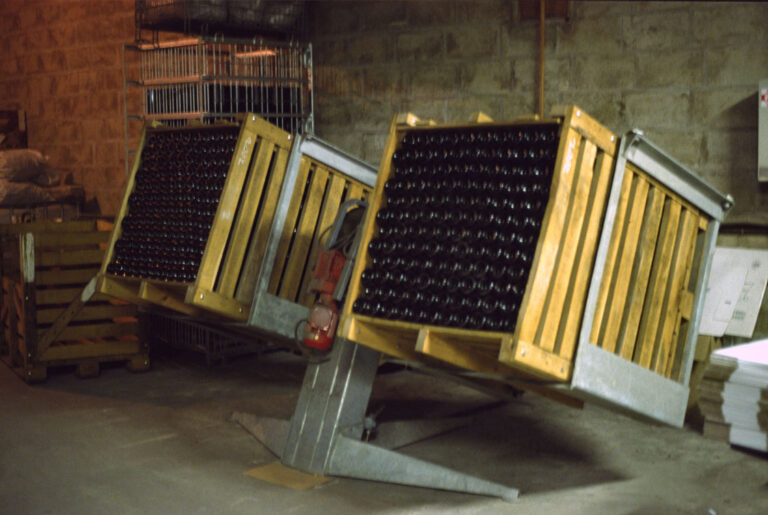One of the questions I get asked a lot is what is dry farming and why is it “such a big deal.” You hear winemakers talk about the fact that their vines are dry farmed. Why is that something that they feel necessary to call out?
Is it just a marketing ploy or does it make a difference to the quality of the fruit coming off the vine? But before we get into whether it is a benefit, let’s talk about what it is.
Dry farming is exactly what it sounds like. There is no irrigation set up for the vineyard. Vines grow using only the water that the vineyard receives from natural rainfall. In some cases, dry farming is the only option. The land on which the vines are planted do not have water rights or access to irrigation. When choosing a site that can be dry farmed, it is imperative that the soil runs deep and is capable of holding the water that it does receive.
Clay soils are one of the best options when choosing to dry farm. Clay absorbs the moisture and can retain the moisture longer than sand or gravel. A combination of clay and loam is ideal, as it maintains the moisture, yet at the same time does not allow the water to pool on the surface where the roots can not take advantage of it.

Why Dry Farm?
Although dry farming has been around for a long time, it is thought that dry farming originated in the nineteenth century. This type of farming was ideal for wheat production, therefore was widely practiced in the Great Plains. With an average of only twenty inches per year, dry farming was a necessary process. In today’s world, climate change is another motivating factor for dry farming. Additionally, with the cost of water increasing, many vineyard managers are looking for creative ways to save a penny and dry farming is a viable option.
Grapevines have a variety of types of roots. The majority of the grapevine root system can be found in the top 3 feet (100 cm) of soil, while individual roots can grow to >30 feet (9 m) depth. While most of the fine roots are at depths of 10 to 60 cm (4-24 inch), with the highest density in the upper 20 cm (8 inch) of soil, main roots are usually found at a depth of 18-80 cm (7-32 inch) (Rijal, 2016).
Have you been missing the weekly Exploring the Wine Glass posts? They have moved. Sign up at http://eepurl.com/be49CD to never miss a post. Subscribe to this blog in the sidebar on this page.
Roots that are dry farmed must dig deeper to find the water and nutrients in the soil. Irrigated grapevines remain closer to the surface since they frequently obtain the water from the surface. Forcing the vine’s roots to dig down and search for water has other benefits when you consider the four functions of a root. (1) provide an anchor to support the grapevine. The deeper the root the more support there will be. (2) Transport and storage of carbohydrates and other nutrients. As the roots dig deep they are able to find more nutrients in the soil. Lack of nutrient storage can be detrimental to the next year’s vintage. (3) The fine roots pick up most of the water from within the soil. (4) Roots are also responsible for the production of hormones such as gibberellin and cytokinin that are responsible for the development of shoots and fruit clusters. The deeper the woody roots, the more space for the fine roots to extend through to explore the water content of the soil.

Results of Dry Farming
Generally speaking, dry farming will reduce the tonnage per acre of the vine. In some cases it can reduce production up to 25%. This may sound counterproductive, but a grapevine that has reduced production, allows for better fruit development. The vine has two parts to its lifecycle; the vegetative and the reproductive state. The vegetative state is the green state. The leaves, shoots, laterals. The reproductive state are the berries.
A vine that has all the water it needs and is never placed into a stressful state will continue to produce leaves. It will spend the majority of its energy creating more leaves so that it increases its amount of chlorophyll. Chloroplasts located within the chlorophyll are the sites for photosynthesis. During photosynthesis, light is converted into energy. The light is absorbed by the chlorophyll and supplies the energy that the plant uses to convert carbon dioxide and water into oxygen and carbohydrates.
 But when a vine is placed into a stressed situation, it begins to go into protective mode. It is almost as if the vine is saying, “I’m not getting what I am supposed to get, so I better make sure that I reproduce in order to continue the species.” So the energy that was being directed to the leaves now goes into the production of berries. These berries contain the seeds that can secure the next generation.
But when a vine is placed into a stressed situation, it begins to go into protective mode. It is almost as if the vine is saying, “I’m not getting what I am supposed to get, so I better make sure that I reproduce in order to continue the species.” So the energy that was being directed to the leaves now goes into the production of berries. These berries contain the seeds that can secure the next generation.
Can you taste the difference?
This is the controversial part of dry farming. Scientifically, you can easily see the benefit of using less water on the environment. You can physically see how the roots grow deeper when they are not consistently receiving water. But how do these facts transfer to the end product?
Those who believe in dry farming will tell you that the flavors will be more concentrated and that you will be able to taste the terroir more easily. The reasoning behind this statement is that without water, the berries will be smaller. Smaller berries equate to a greater skin to juice ratio which in turn lead to more concentrated flavors. Finally, due to less leaves being produced when stressed, the sugar content is typically lower leading to lower alcohol wines.
But is there proof that the wine produced is any better? If you did a blind tasting between a dry farmed wine and an irrigated wine of the same variety, by the same winemaker would there be a difference? That’s a tough one to answer and one I will leave up to you to decide.
Please follow us on Instagram, Twitter, Facebook and Youtube.





